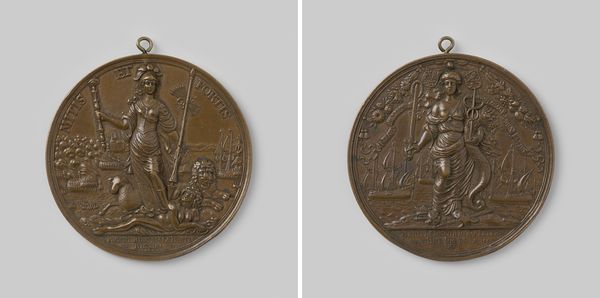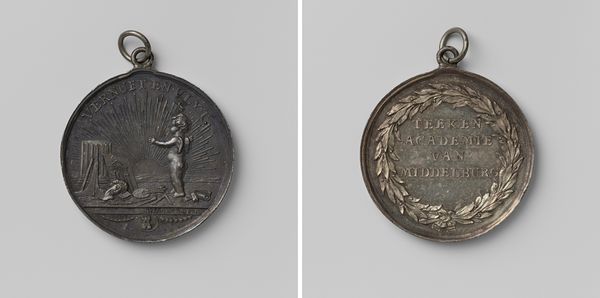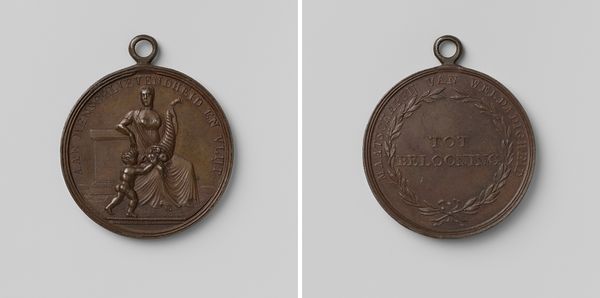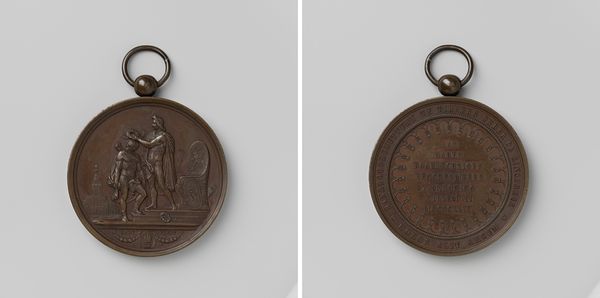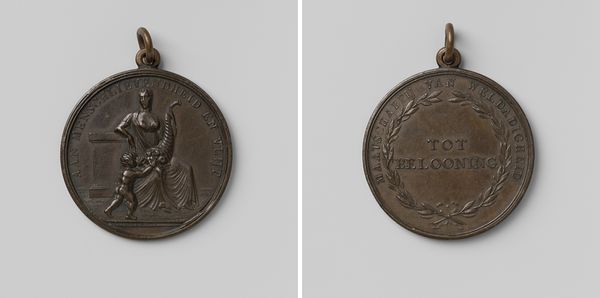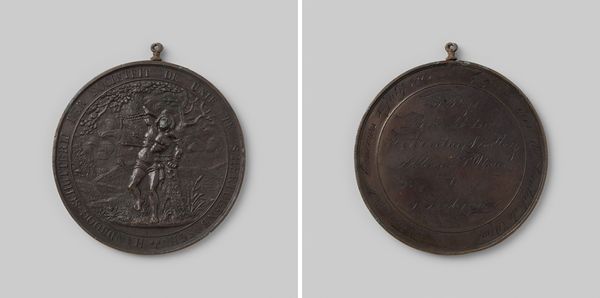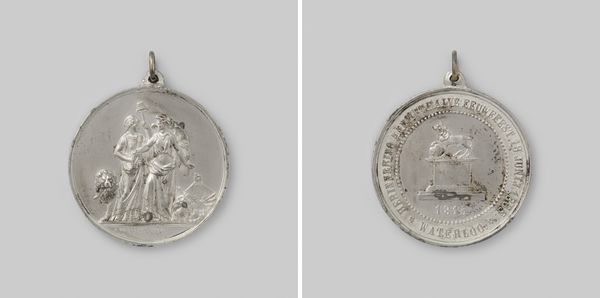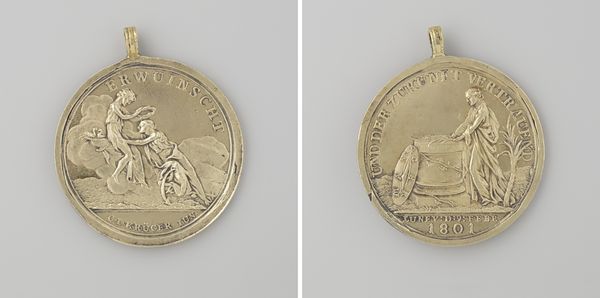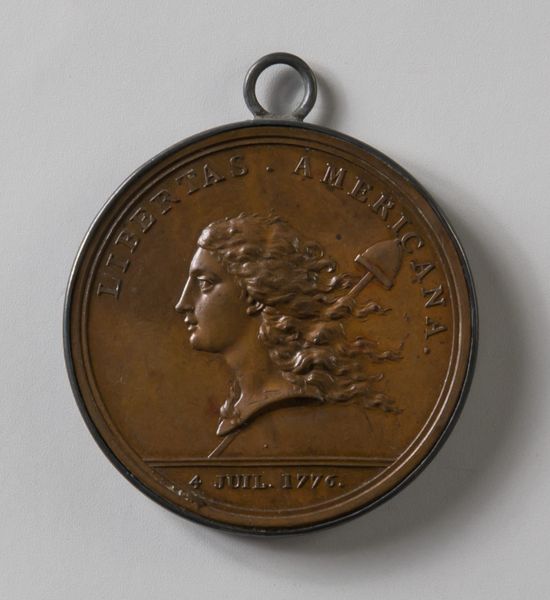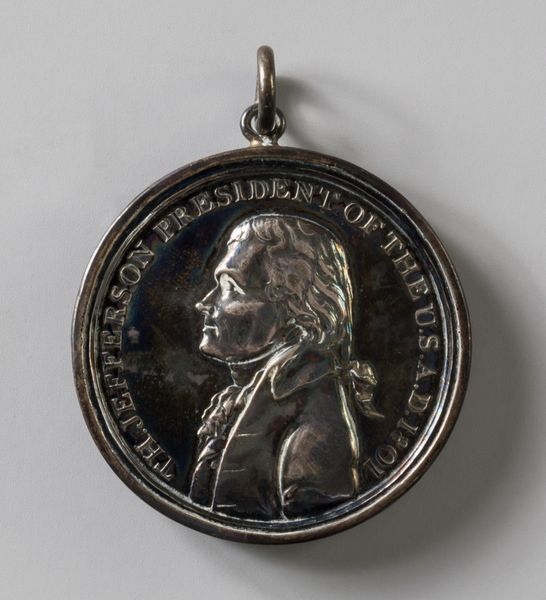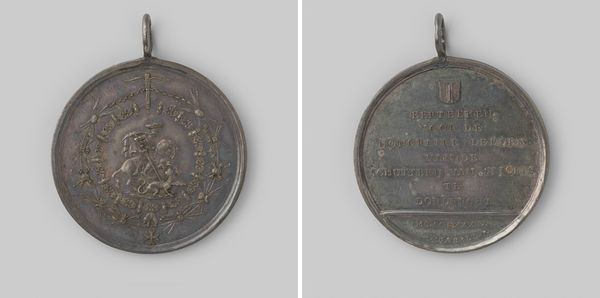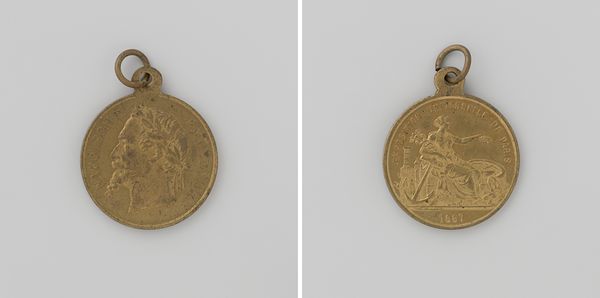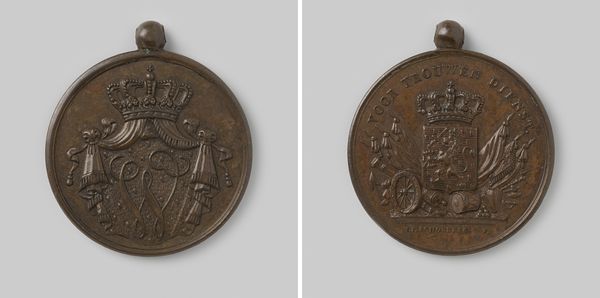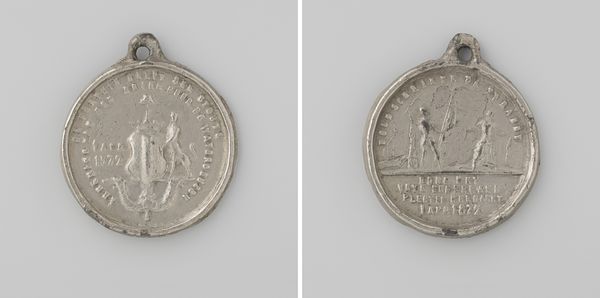
Prescribed by the New York City to the Mexican Volunteers 1844 - 1848
0:00
0:00
metal, sculpture
#
portrait
#
neoclacissism
#
metal
#
stone
#
sculpture
#
sculpture
#
history-painting
#
miniature
#
statue
Dimensions: Diam. 2 in. (5.1 cm)
Copyright: Public Domain
Editor: This is "Prescribed by the New York City to the Mexican Volunteers," a metal sculpture made by Charles Cushing Wright between 1844 and 1848. It looks like a commemorative medal. What I find interesting is the blend of classical imagery with what appear to be scenes from the Mexican-American War. How do you interpret this work? Curator: It's a powerful, albeit complicated, object. Notice how the idealized female figure, reminiscent of Liberty or Victory, dominates the composition. Consider the historical context. This medal was commissioned to honor American soldiers who fought in the Mexican-American War. But from whose perspective is this "victory" being celebrated, and at what cost? Editor: Right, it's a celebration of military achievements but the war itself was hugely controversial, especially regarding the expansion of slavery. Curator: Precisely! Neoclassical imagery often served to legitimize political power. By depicting the American military campaign with such allegorical figures, Wright is participating in a broader tradition of idealizing historical events. But it also silences the Mexican voices, doesn't it? How does the inscription—the cities of battle—influence your reading of the work? Editor: It highlights the specific sites of conflict. It feels… almost like a list of conquests. Does that clash with the symbolism of liberty? Curator: Absolutely. This tension reveals the medal's inherent contradictions. It's a testament to both the artistic skill of Wright, and the deeply embedded ideologies that shaped the historical narrative. The medal functions as propaganda, framing a violent invasion as a triumph of American ideals. By confronting this head-on, can help understand the complex relationship between art, power, and historical memory. Editor: So, understanding the social context transforms it from a simple commemorative piece into a critical commentary on power dynamics. That's definitely changed how I see it! Curator: Indeed! And remember that the medal may have been viewed differently by different audiences, even at the time. These conflicting viewpoints should form part of any critical analysis.
Comments
No comments
Be the first to comment and join the conversation on the ultimate creative platform.
